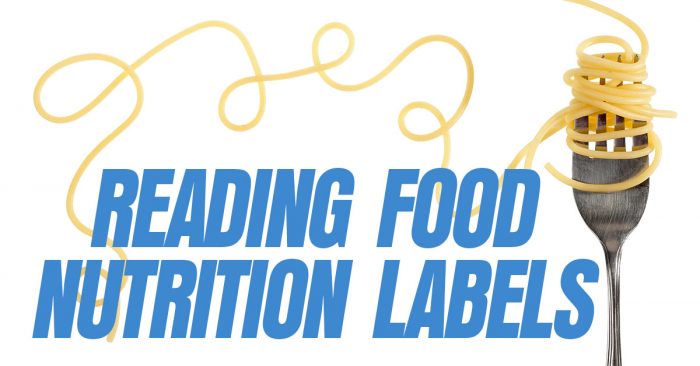Reading Food Nutrition Labels

Reading Food Nutrition Labels
For some, they are must-read material when grocery shopping. For others, they are simply a cryptic message on the labels of food cans and boxes. Technically, they are known as Nutrition Facts labels, and they have been a part of food packaging since 1994. In the years since, they have undergone two revisions, in 2016 and at the start of 2020.
.You don’t have to be a chemist to read these nutrition labels. In fact, just the facts below will help you make better choices for you and your family.
Serving Size
This is supposed to represent the typical amount of the food product one will consume in a single sitting. This section will also say the number of these typical servings that are contained in the package. You should note that serving sizes are frequently much smaller than one would really eat. One can assume this is to make the product look healthier and make it appear the package contains more product than in actually does.
Calories
This is the amount of calories in that single serving. Again, keep in mind that serving size may be small. If you, for example, eat two servings, you would need to multiply the calories by two.
Daily Values (DV)
Daily Values are expressed as a percentage of the nutrients the product contains for a person on a daily diet of 2,000 calories. Generally, one would want a higher value in vitamins, minerals and fiber and lower levels of saturated fat, cholesterol, sodium and trans fat.
Nutrition Terms
Here are some Nutrition Facts to keep in mind when reading a product’s nutrition label:
- A calorie count of 40 or less per serving is considered “Low”
- When a product has 5 calories or fewer in a single serving, it can be considered Calorie Free.
- Low Cholesterol is 20 milligrams or less and 2 grams or under of saturated fat per serving.
- Good Source is when a product has 10-19% of a particular nutrients Daily Value.
- High In means a single serving contains 20% or more of the Daily Value of a specified nutrient.
Ingredients
The first thing to note about ingredients is that they are listed in the order of the amount of each the product contains. It is not uncommon for many liquids to have water listed high as an ingredient. The real key to reading ingredients is knowing that “sugar” can be listed by a variety of names. This is frequently done so “Sugar” isn’t listed at the top of the ingredient list. Various names for sugar include corn syrup, rice syrup, maple syrup honey and molasses. They are often listed as “ose” products like fructose or dextrose. They may also be disguised as “ol” ingredients like sorbitol and maltitol.
Eating healthier can help you lead a longer life that is full of energy. Reading nutrition labels is a small price to pay.
Getting life insurance is another valuable way to protect your family. It may even be cheaper than you may have believed. Get your free, no obligation insurance review and price quote today.









